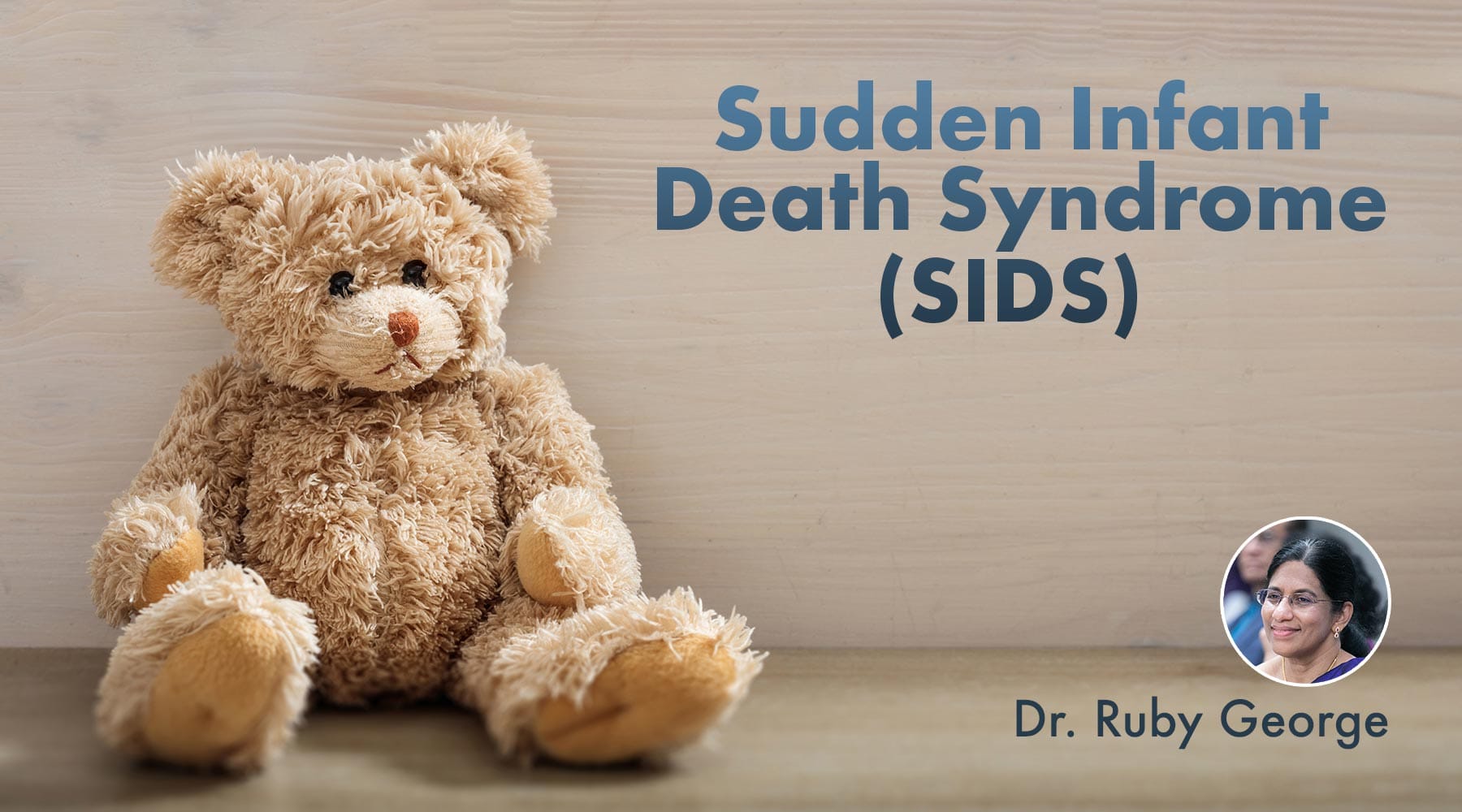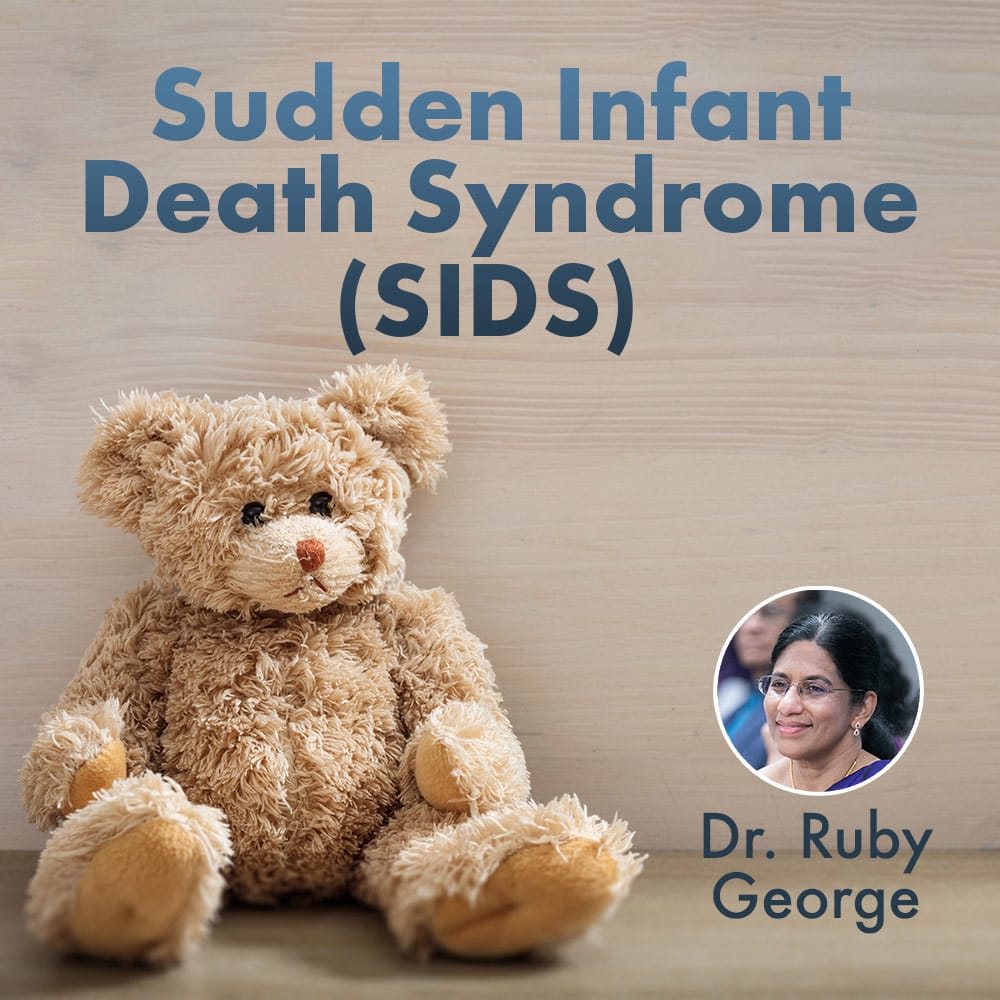What is SIDS?
Sudden infant death syndrome (SIDS) is the sudden and unexplained death of a baby younger than 1 year old. A diagnosis of SIDS is made if the baby’s death remains unexplained even after a death scene investigation, an autopsy, and a review of the clinical history.
Who is at risk for SIDS?
SIDS is a mysterious syndrome, since by its very definition the cause cannot be determined. But certain risk factors do exist.
About 2,300 babies in the United States die of SIDS each year. Some babies are more at risk than others. For example, SIDS is more likely to affect a baby who is between 1 and 4 months old, it is more common in boys than girls, and most deaths occur during the fall, winter, and early spring months.
Factors that may place a baby at higher risk of dying from SIDS include the following:
- babies who sleep on their stomach or their side rather than their back
- overheating while sleeping
- too soft a sleeping surface, with fluffy blankets or toys
- mothers who smoke during pregnancy (three times more likely to have a baby with SIDS)
- exposure to passive smoke from smoking by mothers, fathers, and others in the household doubles a baby’s risk of SIDS
- mothers who are younger than 20 years old at the time of their first pregnancy
- babies born to mothers who had little, late, or no prenatal care
- premature or low birth weight babies
- having a sibling who died of SIDS
Are there any theories about why SIDS occurs?
While the cause of SIDS is unknown, many clinicians and researchers believe that SIDS is associated with problems in the ability of the baby to arouse from sleep, to detect low levels of oxygen, or a buildup of carbon dioxide in the blood. When babies sleep face down, they may re-breathe exhaled carbon dioxide. Normally, rising carbon dioxide levels activate nerve cells in the brainstem, which stimulate the brain’s respiratory and arousal centers. The baby then wakes up, turns his head, and breathes faster to get more oxygen. SIDS babies, however, may fail to rouse.
The “Triple-Risk Model” for SIDS has been proposed to explain how SIDS occurs. The model holds that SIDS occurs when three conditions exist simultaneously:
- the infant has an underlying (e.g., brainstem) abnormality that makes him unable to respond to low oxygen or high carbon dioxide blood levels
- the infant is exposed to a triggering event such as sleeping face down on its tummy
- these events occur during a vulnerable stage in the infant’s development, i.e., the first six months of life
Diagnosis
Currently, there is no diagnostic test available for SIDS. A diagnosis of SIDS is reached only when the cause of death remains unexplained after a death scene investigation, an autopsy and a review of the clinical history. Similarly, there is currently no way to predict babies that are at risk of SIDS.
How to address SIDS
There currently is no way of predicting which babies die from SIDS. However, early and regular prenatal care can help reduce the risk of SIDS. And there are many precautions that you can take to lower the risk of your baby dying from SIDS:
- Put your baby on his back while he sleeps.
- Studies have shown that putting babies to sleep on their backs has reduced the number of SIDS cases by as much as a half.
- Use other positions only if your doctor recommends that you do so.
- Place your baby on his tummy while he’s awake.
- A certain amount of time spent on the tummy while your baby is awake and being cared for is important for motor development of his shoulders.
- “Awake time” spent on the stomach may help prevent flat spots from developing on the back of your baby’s head.
- Make sure that your baby sleeps on a firm mattress or other firm surface.
- Don’t use fluffy blankets or comforters over or under your baby.
- Don’t let your baby sleep on a waterbed, sheepskin, a pillow, or other soft materials.
- When your baby is very young, don’t place soft stuffed toys or pillows in the crib with him. Some babies have been smothered with these soft materials in the crib.
- Babies should be kept warm, but not too warm.
- An overheated baby is more likely to go into a deep sleep from which it is difficult for him to arouse.
- Bring your baby’s crib into your room for the first six months, possibly because it’s easier to monitor your baby when he sleeps in the same room as you.
- Avoid bed-sharing.
- While bed-sharing may have certain benefits, there are no scientific studies demonstrating that bed-sharing reduces SIDS. Some studies suggest that bed-sharing may actually increase the risk of SIDS.
- Make sure that your baby has a smoke-free environment.
- Don’t smoke when you’re pregnant.
- Don’t let anyone smoke around your baby. Babies and young children exposed to smoke have an increased risk of SIDS, as well as more colds and other diseases.
- If your baby seems to be sick, call your doctor right away.
- Parents should be sure to take their babies for their regular well-baby check-ups and routine immunizations.
- If possible, breastfeed your baby.
- Evidence suggests that breastfeeding might reduce the risk of SIDS, for reasons that aren’t fully understood.
References:
- Moon RY, Carlin RF, Hand I, TASK FORCE ON SUDDEN INFANT DEATH SYNDROME AND THE COMMITTEE ON FETUS AND NEWBORN. Sleep-Related Infant Deaths: Updated 2022 Recommendations for Reducing Infant Deaths in the Sleep Environment. Pediatrics 2022; 150.
- Centers for Disease Control and Prevention (CDC). Suffocation deaths associated with use of infant sleep positioners–United States, 1997-2011. MMWR Morb Mortal Wkly Rep 2012; 61:933.
- Pease AS, Fleming PJ, Hauck FR, et al. Swaddling and the Risk of Sudden Infant Death Syndrome: A Meta-analysis. Pediatrics 2016; 137.
- Durbin DR, Hoffman BD, COUNCIL ON INJURY, VIOLENCE, AND POISON PREVENTION. Child Passenger Safety. Pediatrics 2018; 142.
- Thompson JMD, Tanabe K, Moon RY, et al. Duration of Breastfeeding and Risk of SIDS: An Individual Participant Data Meta-analysis. Pediatrics 2017; 140.
- Micheal J Corwin MD, Sudden Infant Death Syndrome. UpToDate, September 2022





